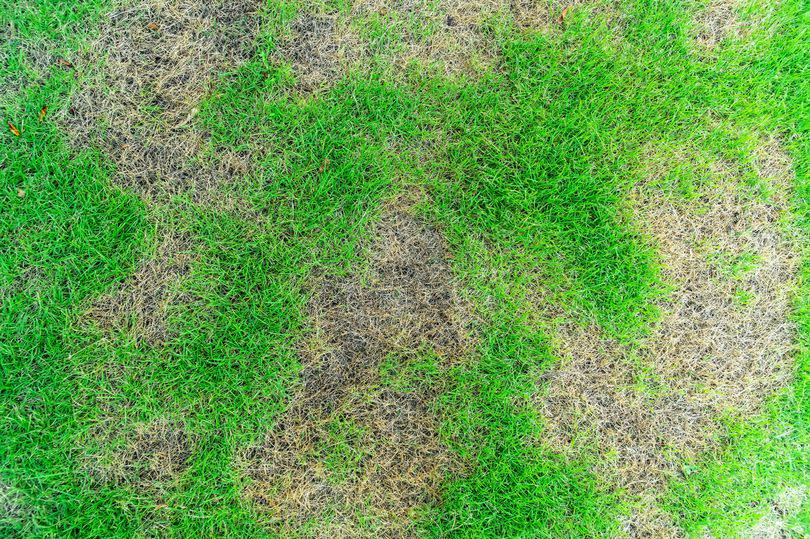Garden expert shares three main causes of patchy lawns - and how to fix it

If you're a gardening enthusiast, there's nothing quite as frustrating as spotting unsightly patches of dead grass ruining your otherwise pristine lawn.
It can be tricky to find the root of the problem as brown or yellow grass could be caused by a number of factors. But fear not, Chris McIlroy from The Grass People has shared the main culprits behind these bald patches - and revealed the solution to transform lawns to their former glory.
As reported by The Express, his first piece of advice is to identify the underlying cause. Common culprits include general wear and tear, but pests and diseases shouldn't be ruled out either. If you notice yellow, brown, or orange spots, it could be a sign that fungi have invaded your turf.
Another frequent offender is pet urine, which due to its high nitrate content, can scorch the grass and lead to patchiness. Chris advises: "Before you get started it's best to take the time to investigate what is causing your lawn patches so that you can take the necessary action to fix them properly."
With the cause pinpointed, the next steps involve mowing the lawn and then 'over-seeding' it to ensure a full and vibrant grass cover. These actions are most effective when carried out in temperatures of about 8 to 10C, the optimal conditions for grass seeds to flourish into healthy plants.
Garden enthusiasts are advised to sprinkle approximately 35g per square metre over the bare patches, with gardening expert Chris noting: "Stamp down the seeds or use a roller as this will improve seed-to-soil contact, then reach for your watering can or hose pipe."
For optimal growth chances, it's recommended to water the seeds daily for about six weeks. To give the grass an extra boost, nitrogen-rich fertilisers can be applied.
It's crucial to wait until the grass is fully grown before mowing, as premature cutting can disrupt the growth process.
Chris also mentioned: "If you can time the over-seeding for a day when it rains after they are in the earth, so much the better."
Join the Daily Record's WhatsApp community here and get the latest news sent straight to your messages.

 Yahoo News
Yahoo News 
